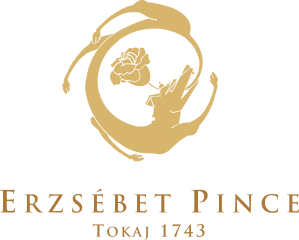The Tokaj wine region
consists of 27 villages on 5500 harvested hectares.
Official grape varieties
Furmint
Hárslevelű
Sárgamuskotály
Zéta
Kövérszőlő
Kabar
Short description of the grape varieties:
Furmint is the most important grape variety of Tokaj. We do not have scientific evidence as to the origin of this grape, but it is most likely Furmint is native to the Tokaj region. Its a vigorous plant, needs relatively little canopy management, withstands drought quite well. Most widespread clones are T-92, T-85, P-26. It has an abundance of flavors. Its ability to develop botrytis easily and retain its acidity has made it into the main variety of the wine region. Its wine has character and ages well. It is a flexible variety, can be made into the highest quality sparkling wine, single-vineyard dry wines, late harvest, and the great botrytis sweet wines. It grows on 3573 hectares in the region.
Wine types:
Erzsébet Pince makes a 100% yellow muscat varietal wine in a fresh, crisp, fruity style with delightful varietal character. This wine is fermented and aged in stainless steel, no barrel
Detailed descriptions of wine categories
Important dates from the history of Tokaj:
13th century
We have written records from the second part of this century that mention vine-growing. They start building the special underground aging cellars at this time.
13th century
1571
The first mention of aszú in the inventory of the Garay family. It is most likely that they started making aszú at the beginning of the 1500s despite the well-known legend of Szepsy Laczkó Máté making the first aszú.
1733-1798
During this period the Russian wine purchasing committee supplies the court of the Russian Tsar and Tsarina with aszú from Tokaj. In the 18th century the world’s most demanded wine is the Tokaji aszú.
1733-1798
1737
Most important date in the history of the wine region, the delineation of Tokaj as a closed wine region by royal decree.
1867
The four-language Tokaj Album is published.
1867
1886
Phylloxera kills 90% of the vines in the region.
1920-1950
Hungarian pharmasutical lists include the Tokaji aszú as medication.
1920-1950
1950
The start of nationalization of privately owned vineyard land.
1990
Start of privatization. Quality wine making becomes the focus of the region once again.
1990
1992
Erzsébet Pince is founded by Miklós and Erzsébet Prácser.
1993
EU grants Protected Denomination of Origin to Tokaj forbidding Alsace and Friuli to use the name.
1993
2002
Tokaj becomes a cultural world heritage site listed by UNESCO.
2000
The first “modern” single-vineyard dry wines are made in the region.
2000
2013
Another milestone in the history of the region. Serious reforms in the wine regulations with emphasis on wine quality. 3 and 4 puttonyos aszú cannot be produced from the 2013 vintage on, aszúeszencia as a wine category is also discontinued.
Climate
Tokaj is one of the northernmost wine regions of the world with a continental climate, with four significantly different seasons. Most of the precipitation occurs during spring and winter, and the autumns are usually dry and sunny which is conducive to botrytis. The region’s climate is perfect for white varieties, cool nights help to retain acidity in the wines. Winter is usually very cold with snowfall.
The rivers
The wine region is bordered by two rivers, Tisza (second biggest in Hungary) in the North and Bodrog in the East. The confluence of these two rivers form one angle of the triangle of the wine region. The rivers are extremely important influencing factors on the wine quality of the region, and the humidity given off by these rivers in the autumn is the miracle botrytis-maker.
Bedrock and soil
Volcanic and post-volcanic activity some 10-15 million years ago resulted in an extremely varied geological profile in the Tokaj region with an unusually high variation of the type of bedrock and soils. This is exactly why not only single-vineyard but single-parcel wines show incredible character. The Tokaj Mountain or Nagy-Kopasz (“Big Bold”) is almost entirely covered with loess, the wines made from vineyards here carry the imprint of the loess based soils as opposed to the northern part of the wine region where the soil layers are not so deep, and the bedrock is fully volcanic, mostly rhyolite and andesite.


 HU
HU  EN
EN 
